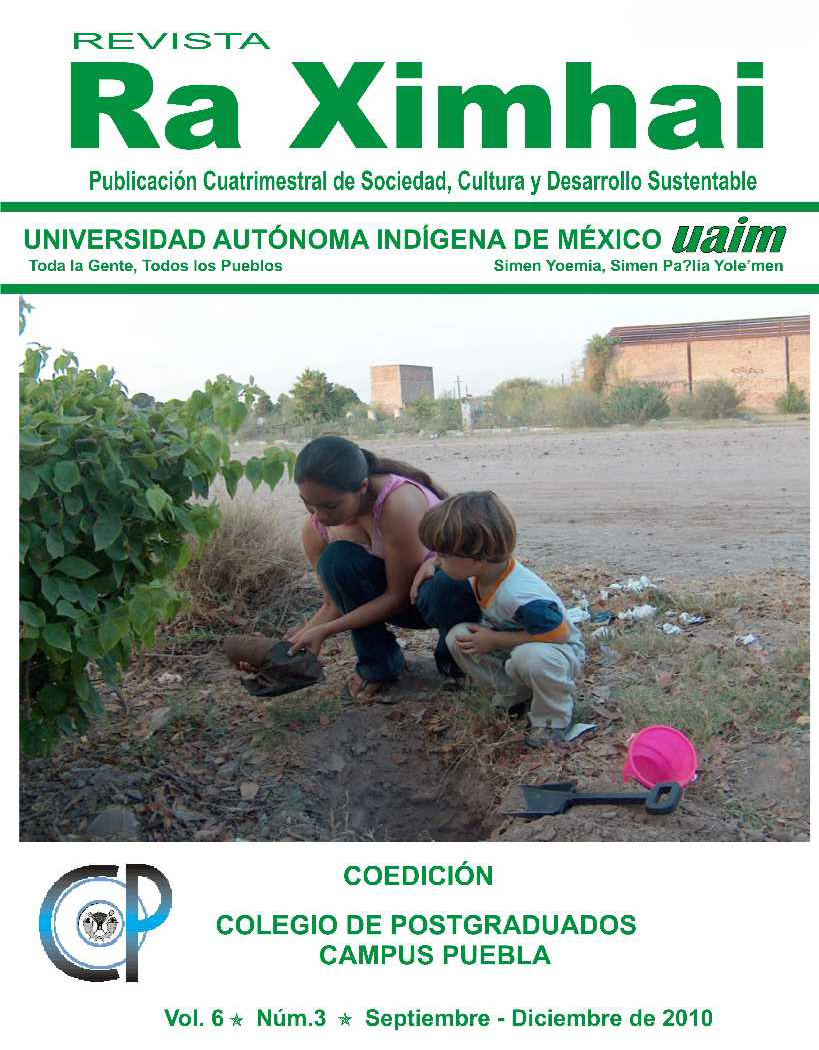Knowledge and use of cacti by rural families in Coxcatlán, Puebla
DOI:
https://doi.org/10.35197/rx.06.03.2010.03.acKeywords:
Cactaceae, conservation, exploitation, biodiversityAbstract
The arid and semi-arid zones of Mexico are ecosystems with a high diversity of plants, with the potential to be used sustainably. The diversity of cacti has been used mainly for food, medicine and construction, generally at a regional level. Unfortunately, the inhabitants of the arid and semi-arid zones do not have updated information about techniques for the sustainable use and management of these resources, despite the knowledge they have of the various species. In order to analyze the knowledge and use of local cacti by the inhabitants, this research was carried out in the community of Coxcatlán, a place that still has a great diversity of cacti. 61 women were interviewed, selected through simple random sampling, and direct observation to record the knowledge and uses of the species that persist in Coxcatlán. Despite environmental degradation and the loss of species associated with the current environmental crisis, mainly derived from the practices and values of contemporary industrial society (Rozzi, et al., 2001), in Coxcatlán there are a variety of cactus species that are used by the local population as food, ornamentation and medicine. However, it is an extractive activity and there is no adequate management, which leads to their probable extinction.
Downloads
References
Álvarez, M. y Montaña, C. 1997. Germinación y supervivencia de cinco especies de cactáceas del Valle de Tehuacán: implicaciones para su conservación. Acta botánica Mexicana. 40: 43-58.
Arias, A. Valverde y T. Reyes, J. 2001. Las plantas de la región de Zapotitlán Salinas, Puebla. INE- SEMARNAT- UNAM.
Arizmendi, M. y Dávila, P. 2001. El valle de Tehuacán-Cuicatlán, Sed, espinas y adaptaciones a una vida difícil. Edit. Fomento Cultural Banamex, A. C. Fundación Cuicatlán. Transcontinental reproducciones fotomecánicas S.A. de C.V. 239 p.
Casas, A y A. Valiente-Banuet. 1995. Etnias, recursos genéticos y desarrollo sustentable en zonas áridas y semi-áridas de México. IV curso sobre desertificación y desarrollo sustentable en América Latina y el caribe, 21
Agosto-15 septiembre. Montecillo, México. PNUMA, FAO, Colegio de Postgraduados en ciencias agrícolas, Chapingo. pp. 37-66.
Reyes, J. 1994. Métodos para la propagación de cactáceas mexicanas. Boletín Amaranto. 7(2): 1-12.
Reyes, J y Arias, S. 1995. Cactáceas de México: Conservación y Producción. Revista Chapingo. Horticultura 3: 85-92.
Rozzi, R., P. Feinsinger, F. Massardo y R. Primack. 2001. ¿Qué es la diversidad biológica? Fundamentos de conservación biológica. Perspectivas latinoamericanas. Fondo de Cultura Económica, México. Pp. 59-98.
SEGOB. 1988. Los municipios de Puebla. Colección: Enciclopedia de los Municipios de México. SEGOB y Gobierno del estado de Puebla. pp. 217-222.
SEMARNAT. 2001. Norma Oficial Mexicana. NOM–059-ECOL-2001, protección ambiental, especies nativas de México de flora y fauna silvestres-categorías de riesgo y especificaciones para su inclusión, exclusión, o cambio-lista de especies en riesgo. Diario Oficial de la Federación 6 de marzo:1-85. (Tomadodehttp://www.semarnat.gob.mx/leyes ynormas/Normas%20Oficiales%20Mexicanas
%20vigentes/NOM-ECOL-059-2001.pdf Fecha de consulta: julio 2009).
Zavala-Hurtado, A. 1997. Suculentas mexicanas/cactáceas. UNAM. CONABIO. CVS Publicaciones, México. 143 p.
Downloads
Published
How to Cite
Issue
Section
License
Copyright (c) 2010 Alma Delia Castillo Campohermoso, Arturo López Espinosa, Ignacio Ocampo Fletes

This work is licensed under a Creative Commons Attribution-NonCommercial 4.0 International License.
Usted es libre de:
- Compartir — copiar y redistribuir el material en cualquier medio o formato
- Adaptar — remezclar, transformar y construir a partir del material
- La licenciante no puede revocar estas libertades en tanto usted siga los términos de la licencia
Bajo los siguientes términos:
- Atribución — Usted debe dar crédito de manera adecuada , brindar un enlace a la licencia, e indicar si se han realizado cambios . Puede hacerlo en cualquier forma razonable, pero no de forma tal que sugiera que usted o su uso tienen el apoyo de la licenciante.
- NoComercial — Usted no puede hacer uso del material con propósitos comerciales .
- No hay restricciones adicionales — No puede aplicar términos legales ni medidas tecnológicas que restrinjan legalmente a otras a hacer cualquier uso permitido por la licencia.








